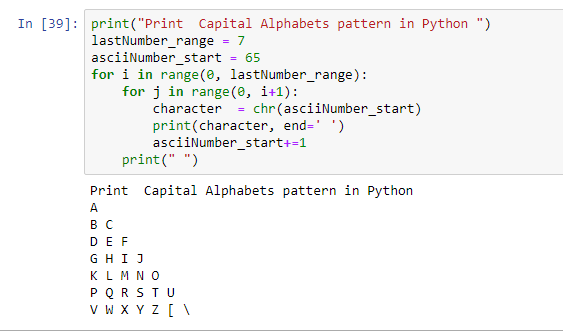


Passing the increment as 0 would return an error message.Negative values can be passed as an increment in order to decrement the output.Points to remember - Python range reverse: This is how you can use Python range to reverse a list of numbers.
PYTHON RANGE CODE
Code and Explanation: for i in reversed(range(2,10,2)): This function reverses the arguments passed.

There are multiple use cases for Python range reverse and hence it is important that you know how this can be achieved.įor this, we use the reversed() function in Python. It is common to reverse a list of values in the range. Definition and Usage The range () function returns a sequence of numbers, starting from 0 by default, and increments by 1 (by default), and stops before a specified number.
PYTHON RANGE GENERATOR
Generator for N numbers and fill its string representation with zeros. There is a perfect solution to it -zfill method. Stop - Required, used to specify where the range should stop. Example code of range to the list of strings in Python.Start - Optional, used to specify where the range should start.Additionally, you can also pass an incrementer, the default is set to 1. The range() method also allows us to specify where the range should start and stop. The range() function in Python 3 is a renamed version of the xrange(). In case you have used Python 2, you might have come across the xrange() function. Since the range() function returns each number lazily, it is commonly used in ‘for’ loops. The numbers in the list are specified based on the argument passed. The range() function allows you to generate a list of numbers within a specified range. Here is an example of building a list of numbers from 0.1 to 0. We also look at the range() methods with examples. Using Python list comprehension we can divide integers into floats as they are added to a new list. It does not store any personal data.In this short tutorial, we look at how you could use Python to range reverse. The cookie is set by the GDPR Cookie Consent plugin and is used to store whether or not user has consented to the use of cookies. stop : Element number at which numbers in sequence have.

range () is commonly used in for looping hence, knowledge of same is key aspect when dealing with any kind of Python code. range () gives another way to initialize a sequence of numbers using some conditions. The cookie is used to store the user consent for the cookies in the category "Performance". There are many iterables in Python like list, tuple etc. This cookie is set by GDPR Cookie Consent plugin. The cookie is used to store the user consent for the cookies in the category "Other. The cookies is used to store the user consent for the cookies in the category "Necessary". The cookie is set by GDPR cookie consent to record the user consent for the cookies in the category "Functional". The cookie is used to store the user consent for the cookies in the category "Analytics". These cookies ensure basic functionalities and security features of the website, anonymously. Necessary cookies are absolutely essential for the website to function properly.


 0 kommentar(er)
0 kommentar(er)
